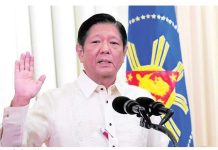
TOMORROW, we will be commemorating the 499th anniversary of the “discovery” of the Philippines by Ferdinand Magellan on March 16, 1521.
Figuratively and literally, Magellan and his men anchored on Mactan with a cross in one hand and a sword in the other. He preached Christianity to the natives, most of whom could not be persuaded to believe him. If recorded history is right, native chieftain Lapu-Lapu and his men resisted and killed Magellan in a seashore battle.
It was not until 1565 that Spain, through conquistador Miguel Lopez de Legaspi, eventually succeeded in colonizing the archipelago which would be known as the Philippines.
In the 1995 book Outcry for Change by the late Eugenio Galido, the author chronicled a number of researched conflicts between the Spanish government and the Church.
While sailing to the Philippines, Legaspi allegedly had a heated argument with his friar partner on the ship, Urdaneta, who wanted to go to New Guinea instead. Like Magellan, they encountered hostile natives in Cebu. They moved to Bohol, only to find native resistance against Christianity, too.
Guido de Lavezaris, who succeeded Legaspi as governor-general of Cebu in 1572, competed with his friar counterpart, Father Rada, for authority.
The first Bishop of Manila, Domingo de Salazar, had just assumed his post in 1581 when he publicly denounced the governor-general, Ronquillo de Penolosa, for wielding “too much power.”
In 1633, Governor-General Diego de Salcedo was not in good terms with Archbishop Poblete. When Poblete died, Salcedo forbade the tolling of the bells and the embalming of his remains. Enraged, the clergy convinced the powerful Inquisition to seize Salcedo and send him to Mexico to face charges.
In 1635, Governor-General Sebastian Hurtado de Corcuera raided San Agustin church in Manila to arrest a fugitive soldier suspected of murdering a girl. Archbishop Ramon Guerrero tried to intervene but in vain. Angered, Corcuera locked up the bishop and the murder suspect in Fort Santiago.
The friars found the opportunity to avenge when Corcuera’s term ended in 1644. They found a sympathetic ear in his successor, Diego Fajardo, who had Corcuera jailed in Fort Santiago for five years – a case of the jailer becoming the jailed.
These government-friar clashes worsened in 1717 under the administration of Governor-General Fernando Manuel de Bustamante. Against the wishes of all religious orders, he squandered government money in rebuilding the fortifications in Zamboanga. He imprisoned people on the pretext of “conspiracy against me.”
Having found a common ground for unity, the friars and hundreds of Filipinos mobbed Bustamante, killing him and his son.
To mend the church-state feud, Spain appointed an archbishop, Manuel Rojo, concurrent governor-general in 1761. However, he ruled for only a few weeks and recommended Simon de Anda as successor.
However, when Anda returned to Spain for a courtesy call with the king, he denounced Rojo, the bishops and the friars in the Philippines for being more interested in money than in saving souls and in interfering with governmental functions.
In 1863, Archbishop Felipe Pardo refused to obey the royal decree of Governor-General Juan de Vargas, prompting the latter to go to court, the Royal Audiencia, which consequently sent the defying friar to Lingayen, Pangasinan for exile.
Fast-tracking to the present, despite the constitutional separation of Church and State, both exert influence on each other. The only difference is that the Church not only refers to the Roman Catholic majority but to a few other politically-influential religious groups, including personality cults. (hvego31@gmail.com / PN)





